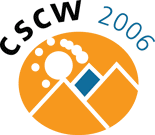Transportation
In this page:
See also:
More information about what to do once you get to Banff is on our Visitng Banff page.
Getting to Canada
The nearest major airport to Banff is the Calgary International Airport. Check out our Visas & Immigration page to find out about entering Canada from other countries.
New security rules are in effect for air passengers. Travelers should check with their airlines and with the Canadian Air Transport Security Authority for details.
Getting to Banff from Calgary
Banff is 130 km west of Calgary on Highway #1 (the Trans-Canada Highway). In normal weather conditions this is about a 1:45 drive from the Calgary International Airport. Options to get to Banff are
- Car rental from the airport.
- Shuttle/Bus services from the airport.
- Sedan services from the airport. ($215 CND)
We encourage CSCW participants NOT to rent a car. Parking at the Fairmont Banff Springs is $29.00 CAD for Valet and $22.00 CAD for Self Parking per day.
If you are renting a car, you will need to purchase a park pass as you enter Banff National Park. The Banff gates are located just west of Canmore on Highway #1 -you can't miss them. The money gathered from these passes goes towards the upkeep of park facilities. This link gives you more information on park rates.
Ride Sharing
If you are renting a car, we encourage participants to share rides. Ride shares can be arranged at the Ride Sharing page on our Wiki.
Getting Around In Banff
Banff is not a very large town (population 8,282 in 2004), so most of the things you can see and do within the town site itself can be done on foot. An excellent map of the Banff town site, provided by Parks Canada, is also available in a PDF.
A great public transit system (PDF) stops right outside the Fairmont Banff Springs Hotel.
If you are interested in seeing some of the sights outside of Banff town site, a rental car would be recommended. But many hotels do offer shuttles to and from the major ski resorts.
Banff Weather
The Rocky Mountains can have almost any type of weather in early November. They can have full snow coverage, so ski equipment might be in order. Or there might have been a long, mild fall, leaving many of the hiking trails still open. The average high in November is 0 Celcius (32 Fahrenheit), and the average low is -8 Celsius (17 Fahrenheit) with 1.2 inches of precipitation. For more up-to-date weather information, check out Environment Canada's forecast.
If you require any more information please contact:
Local Arrangements Chair
Shannon Goodman, Smart Technologies, Canada
local@cscw2006.org


